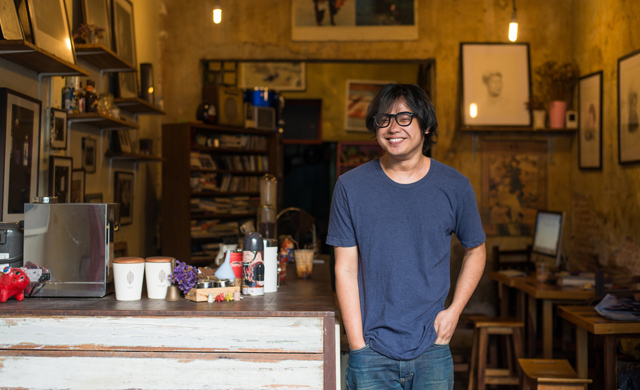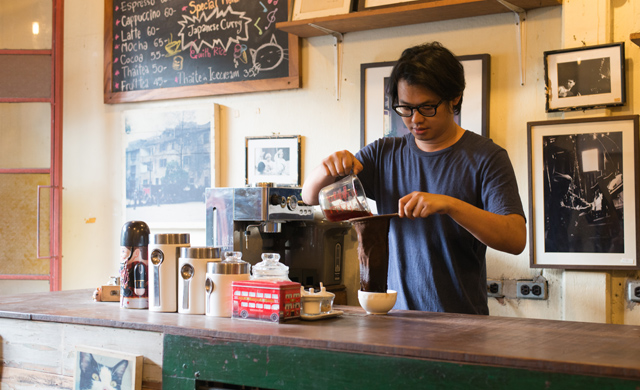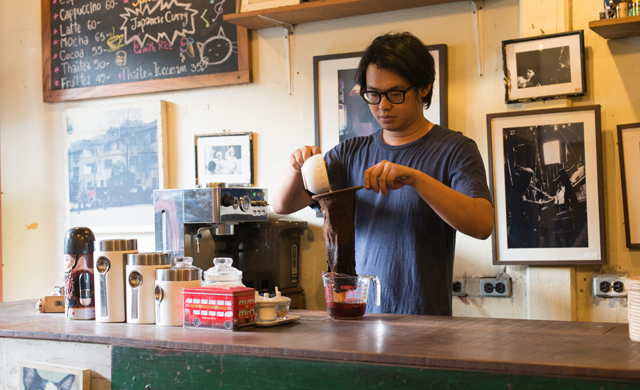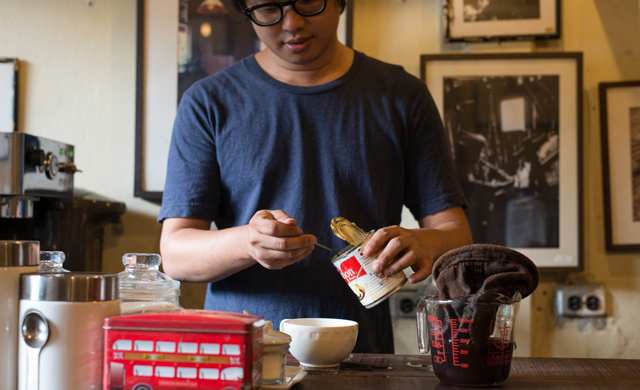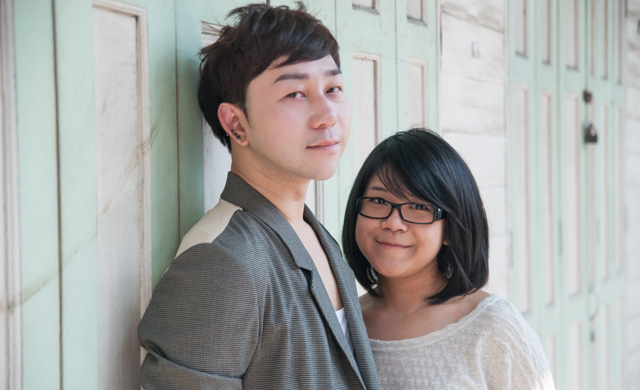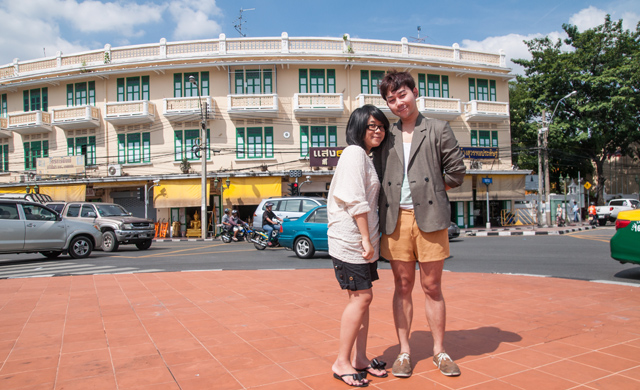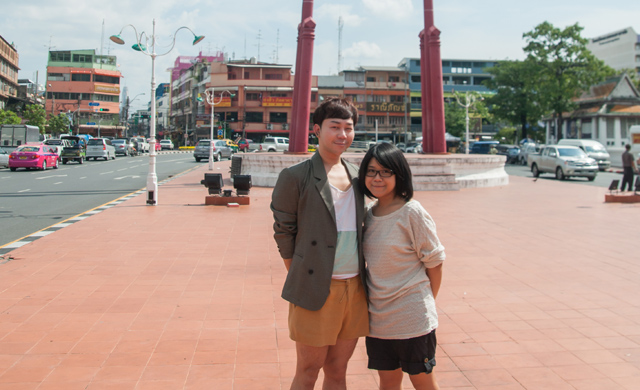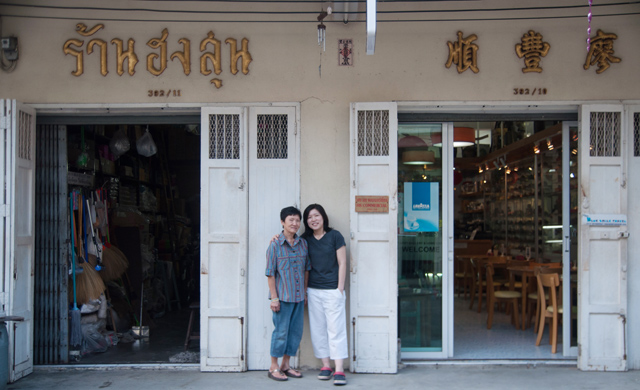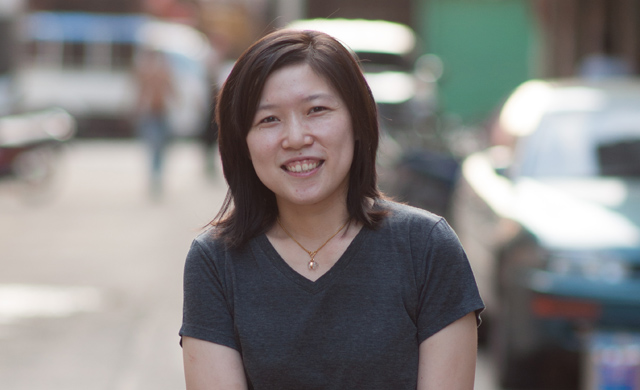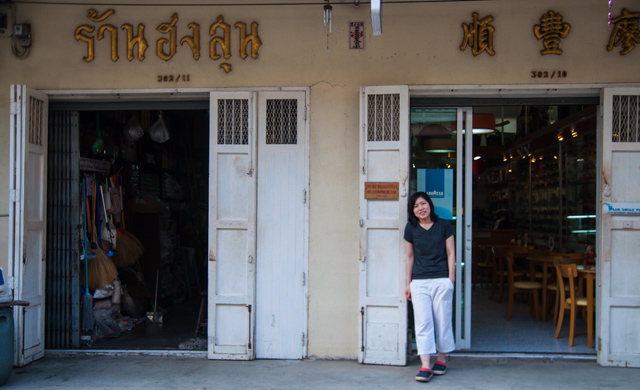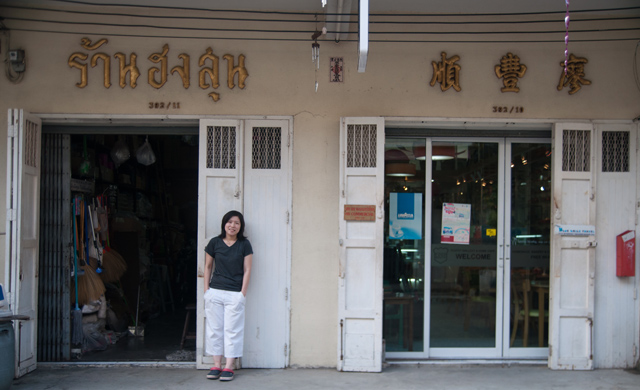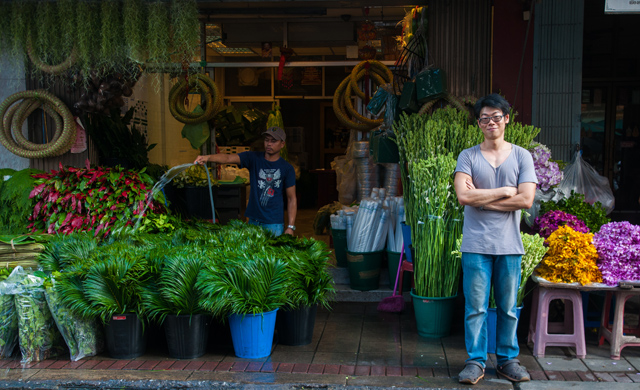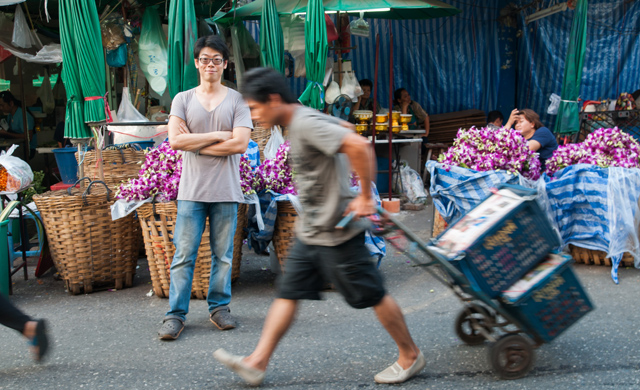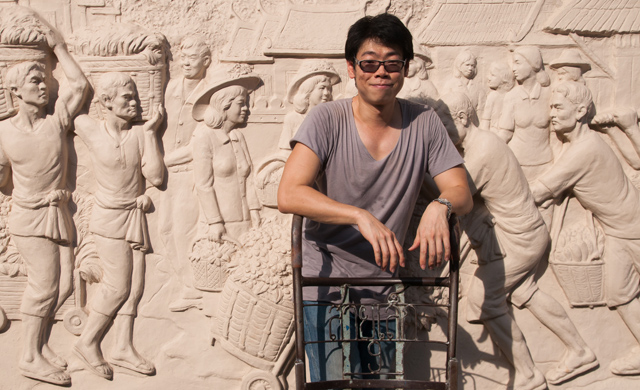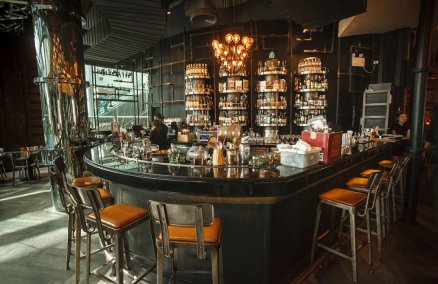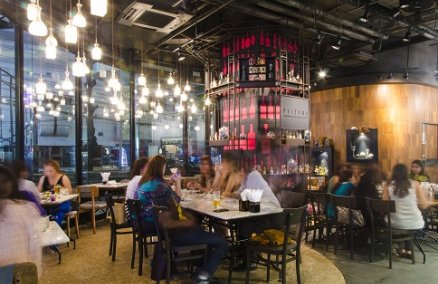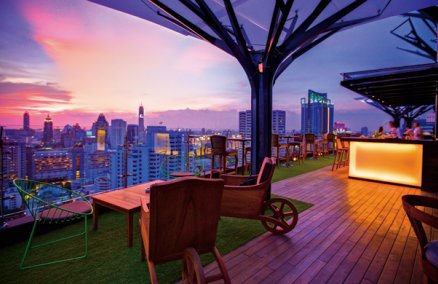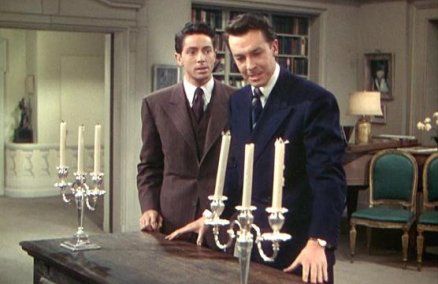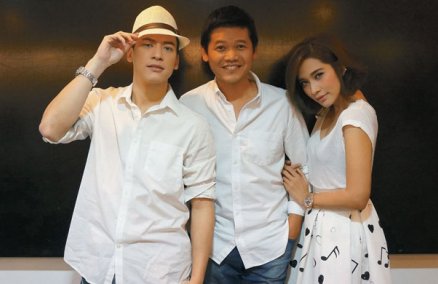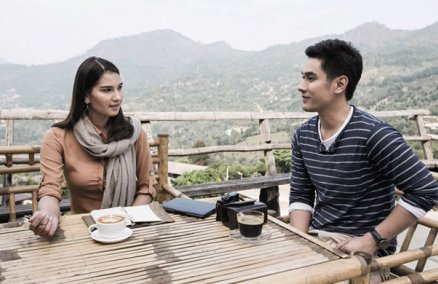
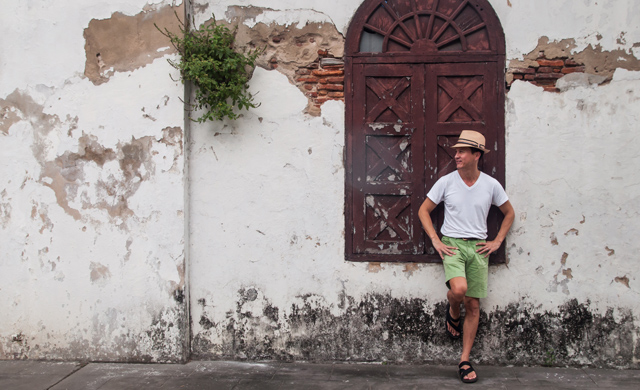
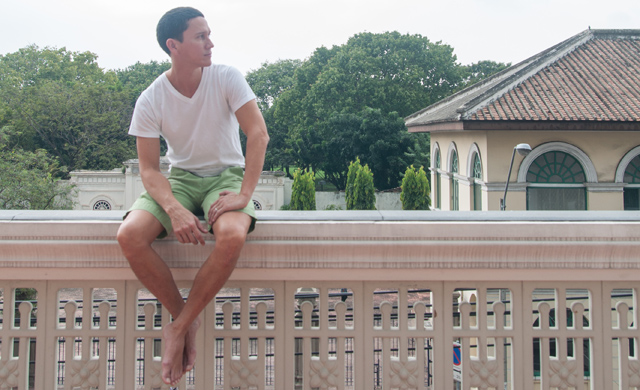
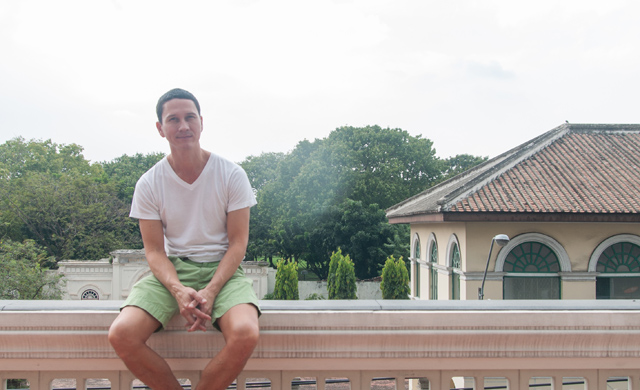
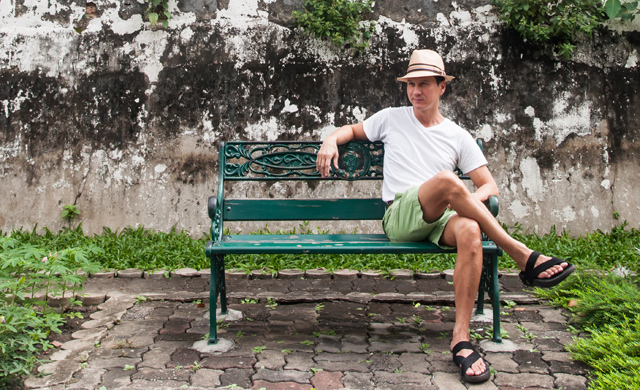
Why did you dump Sathorn district to live in the old town?
I’ve always wished I was born 100 years ago. It’s a beautiful era. That’s why I always love to travel around to nostalgic towns like Luang Prabang in Laos, Bagan in Myanmar and Hoi An in Vietnam, where I got married to my wife. We both love old towns. When I started building The Siam Hotel in Dusit district, I realized that our family owned an old building in the old town, too. It’s right in front of Rommaneenat Park. It used to be the office of my family business but was abandoned and became derelict. No one had lived there for more than 60 years.
How has your family adjusted to the area?
It’s really easy. Apart from the inconvenience of renovating the house while we’re living here, we don’t have anything to complain about. If you ask my kids [six and four years old], who were used to living in a condo in Sathorn, they’ll say they never want to move anywhere else. Though my house sits right on the main street [Mahachai Road], I’m so comfortable. If people look up to my window on the second floor, they might see me walking around in my underwear!
Is it convenient?
I’m lucky that my workplace, The Siam, is close to my house and also close to my kid’s school. So we can be at both places within 20-30 minutes in normal traffic. But it’s a bit tricky to get into the city. I don’t really go to the city center unless I have work there. I haven’t been to Thonglor in ages.

What is the great charm of the area?
This area was once the Sukhumvit of Bangkok. For someone like me, who used to live in New York, it’s the Bangkok version of Soho. It’s bustling during the day but in the evenings, it’s really peaceful—not only my house, the whole district. I love the fact that when I walk down the street, I see people sitting in front of their houses chatting to each other. I often have a chat with my neighbors. It builds trust in the community, seeing the faces of the people around you. That’s what we need in Bangkok. We’ve lost this.
How do you feel about the arrival of the MRT?
I think it will benefit everyone. It will save people time—time we should spend on other things we love, like family. I’m lucky now that this area doesn’t have too much traffic, though.
What are your favorite places around the area?
There are many. For eating, Seven Spoons and Brown Sugar are my favorites. At Seven Spoons, I love their tapas appetizers, which are both good and cheap. I also enjoy strolling around Saphanlek where there are toys and games for sale. I always stop to sip coffee at SOHO Coffee—good coffee for just B35. But my favorite place in the area is Klong Thom Market. I walk around there every weekend looking for antiques and old stuff to add to my collection.

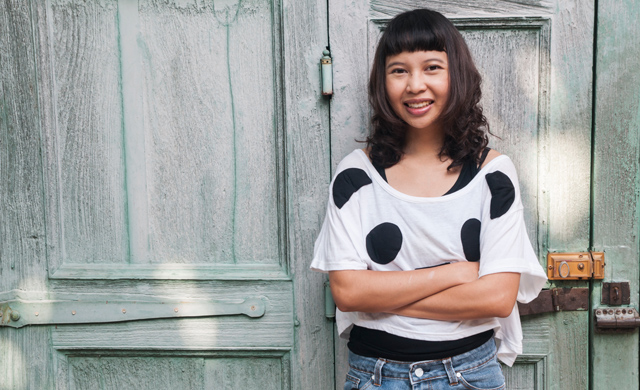
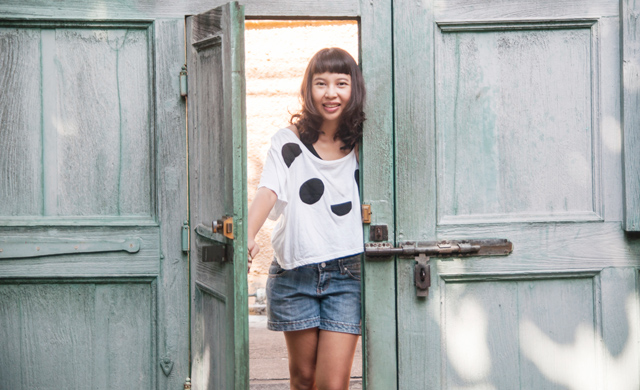

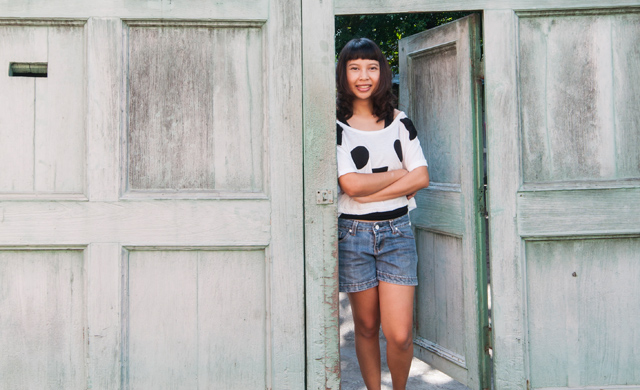
What’s so charming about your neighborhood?
Things don’t change much around here. The bars on Phra Arthit might change but my neighbors are mostly the same people I’ve been saying hello to since I was a kid. It’s not as hectic as along Sukhumvit. You can also enjoy the arts very easily, here: from temples to museums, classical Thai music and even the cute old lifestyle of people on my soi. I’m really lucky living here.
What’s made you appreciate art so much?
I was raised in a family of artists. My great grandfather was one of the first people who took care of the Fine Arts Department. There have been Thai dancers, musicians and writers in this house. Basically, this neighborhood has been my place of learning.
You had an office life before; was it hard commuting into the center of town?
The hardest part of living here might be getting around. I used to work in Silom and my record for being on time wasn’t too pretty. Public transport is not punctual, though public boats are your safest bet. But even when I had an office life, the good outweighed the bad by far. Going to the park—watching old people exercising, foreigners juggling, smelling the river [which doesn't stink here] and listening to the waves lap the bank. The parks are essential. It’s where locals meet and interact.
Do you miss being in the city?
Only when I want to see a movie. One thing you really don’t have in the old town is luxury—but not everyone needs it. For me, I have to trek a bit further for a slice of cheesecake as the nearest mall, Tang Hua Seng, offers only khao mak [fermented rice].
What are your favorite things to do in the old town?
I recommend going to the National Museum. Not so many Thais visit the place. It’s not trendy but it’s got a very charming vibe with its big lotus pond. It’s very quiet there. Taking a boat on a canal tour is also one of my favorite things to do with my dad. Thais don’t know much about it, but it’s amazing.
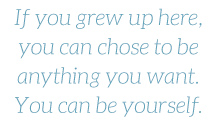
Favorite eating spots?
Khao Gaeng Raan Pen on Rambuttri Road and Aa Aisa’s khao mok nuea [beef with biryani rice] and guay tiew gaeng [noodles in curry]. For more proper places, I usually go to Escapade Burgers & Shakes for their burgers or Seven Spoons. The food is so delicious there and you’ve got some good bars, great jazz and top coffee just around the corner.
What’s behind the sense of community here?
I think it has been built from the beginning. During certain festivals, we do some activities together, like making merit. During the film festival, people even open up their homes for screenings. It’s like we’ve preserved the culture of a village. People have respect for each other. If someone wants to change their place into a guesthouse, they would come tell us directly. I think that’s pretty rare. I think it’s because there are hardly any new faces moving in. In the city, people might just move in for the short-term, so they don’t have that sense of attachment. Here, we know there’s a story we all share and we’re proud of it.
What are your neighbors like?
If you grew up here, you can choose to be anything you want. You can be yourself. This freedom allows for lots of different characters and personalities.
Have you ever thought about moving elsewhere?
We were once offered lots of money for our place. But there’s nowhere we could get a house like this. The biggest tree in our house, my dad planted it when he was a kid and it’s grown up with him. I've planted one myself, too.
BK ASKS
What do you like most about your neighborhood?
|

Michael Biedassek
co-founder of Bangkokvanguards,
lives near Dinsor
I like that we have building regulations in the area, which mean that there’s no skyscrapers and you find old buildings dating back to the beginning of the 20th century. Then there is the village atmosphere, with certain people being known for specializing in specific crafts such as the production of utensils or Buddhist sculptures. It’s a rich community that keeps growing organically.
|
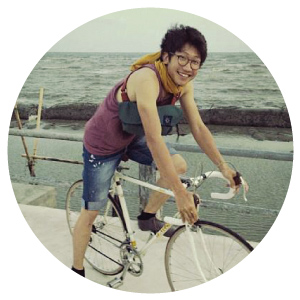
Chanod Tangsin
28, business owner, lives in Pom Prap Sattru Phai
Nothing is new here and that‘s what’s charming about it. Also, no place is isolated. Everything is close by so it’s easy for me to wander around to places like Tha Prachan, Tha Tien and Klong Thom. There is a drawback to living here, though, which is the lack of parking spaces if you need to drive.
|
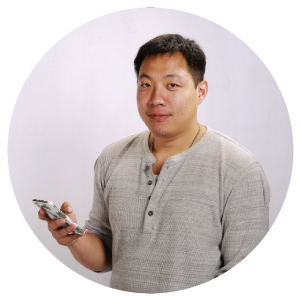
Sidtrun Santichaikul
28, photographer, lives in Tha Tien
Even though I have had to move a bit further down the road due to the construction of a community mall, what makes the place home
is the familiar backstory and faces. The buildings may age but the sense of community remains unique as Tha Tien was the first shophouse community built in Bangkok. We all know each other and our community is similar to what you might find in the countryside.
|
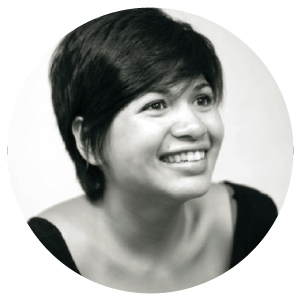
VipaVi VienRavi
33, brand consultant, lives in Banglamphu
The vibe in old town is very unique. You've got a beautiful road like Ratchadamnoen with one side being the old European-style buildings and the other side the temples. The area mixes hip Bangkok with the distinctive traditional culture. I'm right also in the middle of every big festival, from New Year to Songkran and it's such fun.
|

What do you like about your neighborhood?
Life is very diverse in the old town. I love walking down the street because you know you are always going to see different people, from prostitutes in dodgy dark corners to hi-sos in those hotels by the river. Many people bike but I don’t. You see more of what’s going on around you when you walk. I can stop at any building I want to take a look up close or walk down any soi I want to explore. If you live in places like Ladprao, it’s really difficult if you want to just stroll around and the vibe is totally different.
Do you think the MRT will have any impact on people’s lives?
I think we already have decent transportation: buses, boats and tuk-tuks. I can get to the MRT or BTS in about 20 minutes. With the MRT coming, it will be even more convenient, but knocking down the really old buildings in Yaowarat is not the way it should be done. Those buildings should be preserved and the MRT built a better way.
What’s the rent of this shophouse?
B20,000 a month. It costs a fortune living here as you have to fix so many things due to the buildings being pretty old. The worst problem is the termites.
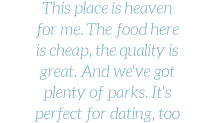
What are your favorite places?
I find the Khao San area a bit boring, but I like the night market behind Wat Chana Songkram. The vibe is very chill and the space is much bigger. For hanging out, I recommend Babble & Rum at Riva Surya. It's by the river, quiet and the food is not expensive. Khao Tom Fa Mui is a great choice for late-night people. Just make sure you don’t miss the moo krob tord gluea [fried pork with salt]. We also have a good izakaya here at Musashi Bar while Adhere is one of the few places you can find real blues bands in town.
What do you like most about your neighborhood?
I grew up in a family who loves eating. So this place is heaven for me. The food here is cheap and the quality is great. And we’ve got plenty of parks, places where people can connect with each other. It’s perfect for dating, too.
Why did you choose to live on Phra Sumen Road?
We’re lucky that everyone here is against transforming the area into a loud and drunken nightlife area like Phra Arthit. We share the same interest of admiring the culture in the area, so we have pretty unique places like Passport Bookshop, Dialogue, Brown Sugar and lots of little cafes.

How long have you lived here?
Ked: I was born here. My parents lived here selling salapao (Chinese bun) for 10 years.
Em: I moved here nearly 10 years ago from the Ramkhamhaeng area.
How do you get around?
Ked: We both use public transport. As you can see, it’s hard to find parking here.
Em: I have no plans to buy a car. I think it’s really convenient living here. It’s near important places like The Grand Palace or Sao Chingcha [Giant Swing] and even the BMA Office. You will never get lost. Everything is so close at hand.
What do you like most here?
Ked: I work in the city center at Ploenchit. Having to travel to such a bustling area, when I reach home I really appreciate how peaceful it is. It’s a slow life, here. I love that the neighbors know each other. I also love that buildings here are low-rise. I’m able to walk and see a clear sky filled with iconic attractions like the Giant Swing.
Em: I like the city planning, here. It’s clearly defined: block after block. It’s like nowhere else in Bangkok. You can walk along the street and see beautiful buildings. Everyone knows each other and there are always shops open on the street for late-night street food, so I feel safe walking here.
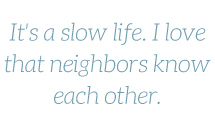
Any cons of living here?
Em: Yes, the protests. As you know, this is a place with a long history, especially regarding politics. As such, Democracy Monument is always one of the main places people gather to protest. It’s quite hard to get around at these times. Other than that, it’s really a pleasure to live around here.
Have you ever thought of moving to the city center?
Ked: I considered buying a condo to get to work easier, but then I thought of what we have here: the buildings, the parks, the people. It’s really warm and welcoming. So, I ditched that idea.
How do you feel about the arrival of the MRT?
Em: We love it. It’s going to be great for people and tourists to visit here. I don’t think it will change the sense of community that much, because many people who live here come from families who have lived here for generations. It’s hard for them to sell up and move out.
What’s your favorite place in the neighborhood?
Ked: I love Lan Kon Meaung for its cheerleader troupes practicing their routines, old people doing their tai chi... I also love Phra Athit Road: it’s not modern like Sukhumvit but it’s got a real charm. My favorite food is Siriporn Pochana which is just across from my house. Their tomyam pla is superb. Its tangy sourness perks me up every time.
Em: My favorite place for shopping here is Klong Lod. I can find anything there: fabric, vintage bags, classic glasses, antiques and even plants.

What do you make of the changes in your area?
It’s completely changed from how it used to be 30 years ago. Tha Tien used to be one of the most bustling markets in town as it sat right on the bank of the Chao Phraya River. The old times here were so great. My family business went really well: our kitchenware and cleaning items were in great demand. But when convenience stores arrived, our business, as well as those of our neighbors, didn’t do so well. When I came back from Australia, I decided to open a small café called Food Route as I learned how to bake while I was abroad. There are many tourists who go to Watpo Thai Traditional Massage School in my soi on Maharat Road so it really fits the bill.
Is it hard to get around from here?
For cars, yes. The traffic is bad. So my first choice is the Chao Phraya Express Boat. It’s so convenient as I just walk to Tha Tien Pier then hop out at Sathorn Pier to get into the city.
What’s the charm of living here?
It’s the sense of community. People have lived here for generations. Grandpas knows grandpas, parents know parents and, of course, kids play together. It’s really hard to find in today’s society. Those old people who moved out because their children live elsewhere still come back to chat with their old friends. It’s a real bond.
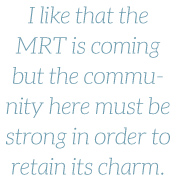
What do you think of the arrival of the MRT?
I'm really scared that it will become another Khaosan Road. I like that the MRT is coming but the community here must be strong in order to retain its charm. What’s the point of turning this place into a street of endless guesthouses and cafés? We should retain our identity as a residential area with small shops owned by people who live in the area.
What are your favorite local joints?
It’s mostly food places. I recommend Kim Leng at Kok Wua junction. It’s a small baan-baan restaurant that’s a real hidden gem in the area. I love their mee krob [fried crispy noodle]. Another one is Farm to Table near Flower Market. I love their black sesame ice-cream and green tea float. There’s also the Yen Ta Fo Nai Auan near the BMA office. It’s superb. As I’m running a restaurant, I love to buy ingredients at Trok Mo Market. Everything there is so fresh and bursting with flavor.

What’s your routine like living here?
Now it's strawberry season, so for fruit suppliers like me, we sleep from 5pm-1am. The products arrive at 2am, which if you are sleeping, is the loudest hour. Some shops open normal hours so Pak Klong Talad is literally a place that never sleeps. Say you come back home drunk at 3am and try to sneak in quietly—the next morning, your parents will hear all about it from the neighbors anyway.
Have you ever thought about moving elsewhere?
I once thought about moving to a condo after finishing my Master’s Degree but once I realized how much my parents love living here, I started to like it, too. I took on my parents’ business after starting to help them during the economic crisis. Once I learned how exhausted they were, I couldn’t not help them.
What do you like to do in your free time?
Riverside cafes are always my venue of choice. But if you visit the area and have the energy, it’s a really great place for a walking tour to visit the temples. You should start from the Grand Palace, City Pillar, Wat Suthat, Wat Pho and Wat Chana Songkram, then take the shuttle boat across the river for Wat Rakhang and Wat Arun before coming back for Wat Kalayanamit and San Chaopho Suea.
And your favorite food?
Jae Pom on Saphan Lek. Their beef noodles are amazing. The price starts from B80 but you get a really big tender chunk of beef. Do go early as they’re all done by around 1pm.
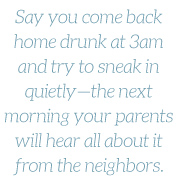
What are the problems living in Pak Klong Talad?
Parking is a troublesome. We can’t park our cars in front of our houses like elsewhere because there are vendors set up on the street. We have to park at a monthly rental spot on the riverside or sometimes across the river. The traffic is pretty bad here, too, especially at Chinese New Year or Valentine’s Day. A few years ago, the two were on the same day—the traffic was nuts. It’s a hectic place but it’s home for me.

1. Escapade Burgers & Shakes
This tiny shophouse with an equally petite courtyard out the back serves up the homemade liquors of mixologist Karn Liangsrisuk and the juicy burgers of chef Van Rohitratana. We recommend a beef burger (starts from B180) with homemade ketchup. 112 Phra Athit Rd., 087-363-2629, 081-406-3773
2. Food Route
Tucked deep in the old town, this small café serves a variety of tea and coffee with homemade baked cakes and cookies. Coffee here starts from B50 and cakes include the Yakult pipo cake (B75) and coconut cake(B70). They also offer homey organic dishes. 320/10-11 Maharat Rd., 02-622-1921
3. Seven Spoons
This eatery, now in a bigger space, serves up healthy and delicious, homey and hippie American meals such as a quinoa salad with grilled vegetables and feta (B260) or razor clams with tarragon butter (B290). They are now also open for lunch with a menu that includes the delicious tempeh wrap with mixed greens, roast eggplant, tomatoes and green chutney (B160). 22 Chakkrapatipong Rd, 02-629-9214
4. Dialogue Coffee and Gallery
Set in a 100-year-old house, this coffee shop and art gallery serves up drinks and snacks: cappuccino (B50) and quesadilla with meat sauce (B90), plus some wine (from B140 by the glass). 533 Phrasumen Rd., 084-754-8799
5. Babble and Rum
Make the most of its location right beside Phra Arthit pier by heading to the outdoor terrace at sunset for the full package: comfort food (smoked salmon and avocado salad, B290), tasty cocktails (candy-flavored vodka, melon syrup, lime juice on top of jelly, B280) and views that take in the river and two bridges (Pinklao and Rama 8). Riva Surya, 23 Phra Athit Rd., 02-633-5000
6. Sheepshank
The folks behind Seven Spoons bring us this sophisticated boat house where you can sit back and enjoy river views while noshing on dishes like the seafood paella with Spanish saffron (B320). Phra Athit Rd., 02-629-5165
7. Farm to Table
This organic café not only grows their own vegetables, in Phu Chee Fah, but turns them into ice cream with flavors like sesame, green tea and wheat grass (B35 per scoop). Order it as an affogato (scoop of ice cream with espresso shot, B80) or stick with the iced latte or green tea (B45). They also do daily lunch specials. 179 Asdang, Wongburapapirom, 02-115-2625
8. Bamsha
This old-school shophouse serves up coffee, exhibitions and events like poetry readings, painting classes and live folk music. Food includes their signature Bamsha burger (B150) to go with their drip coffee (from B60). 507 Prasumain Rd., 084-160-0052

































